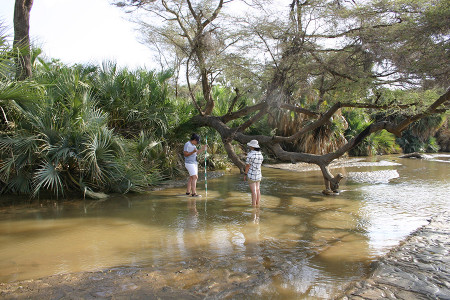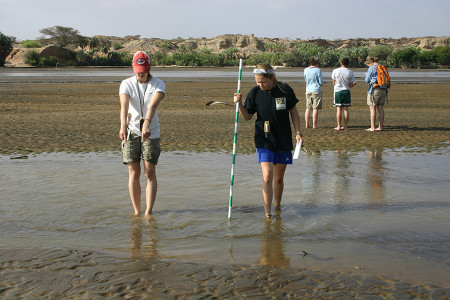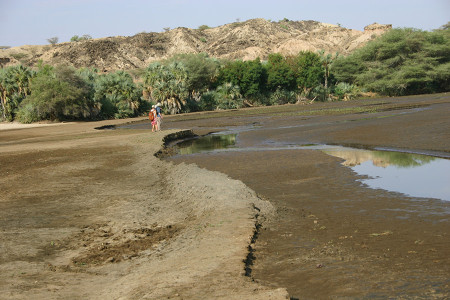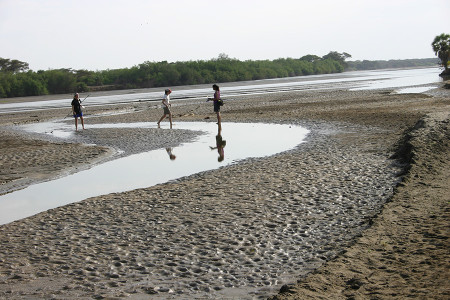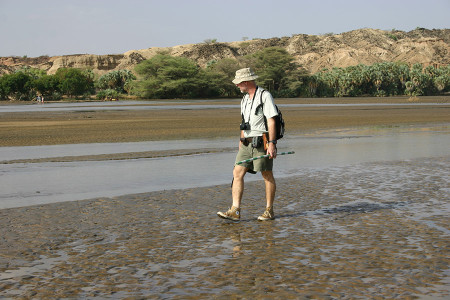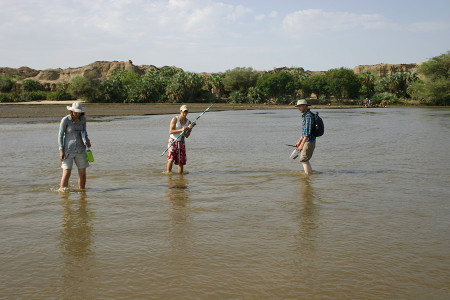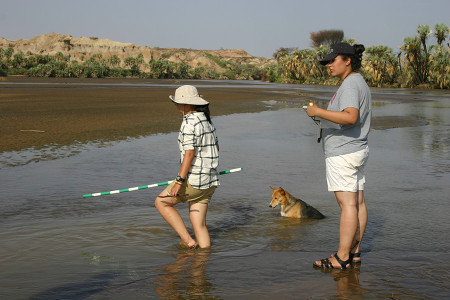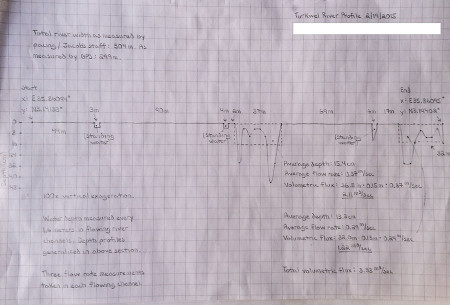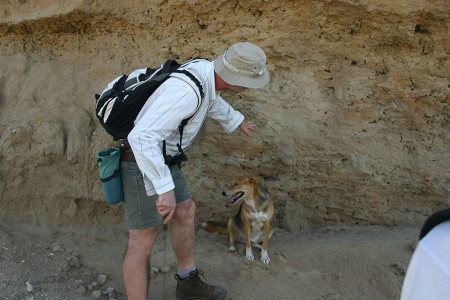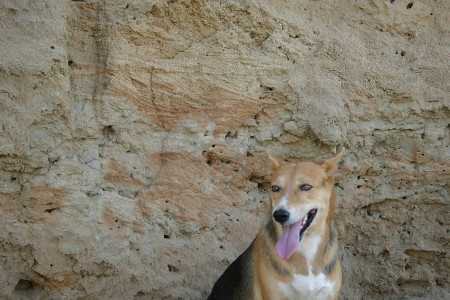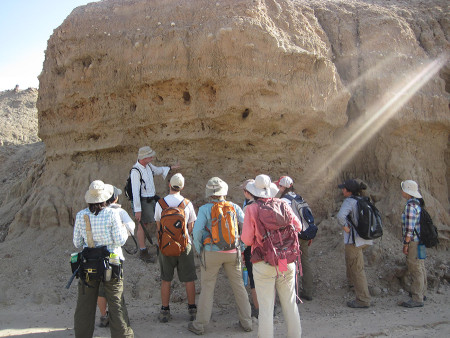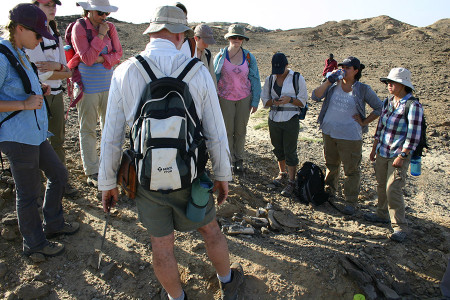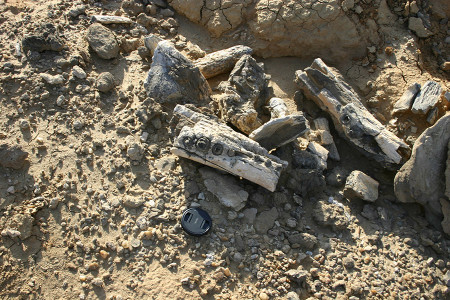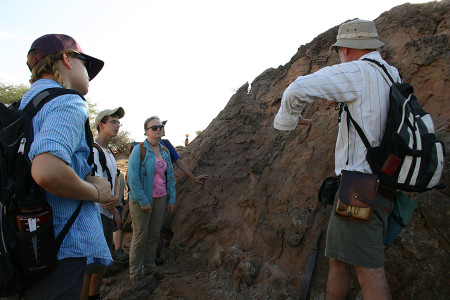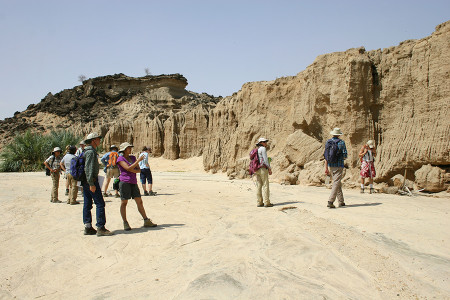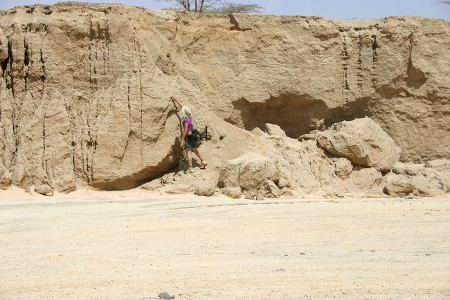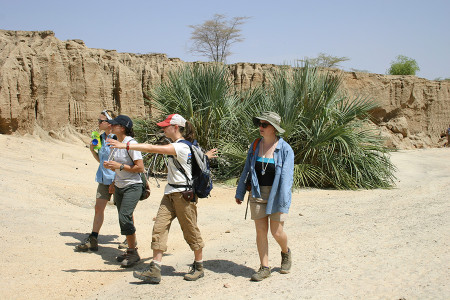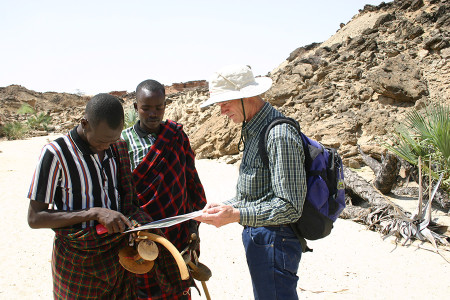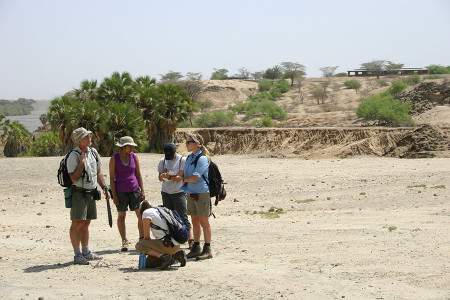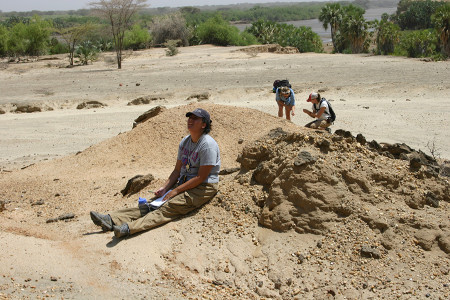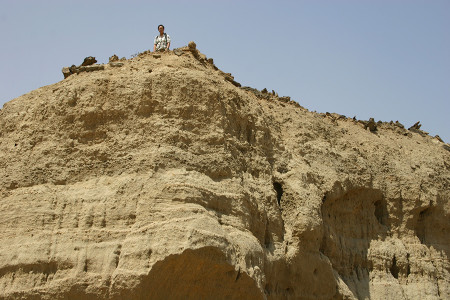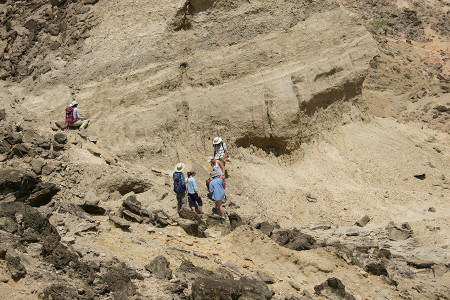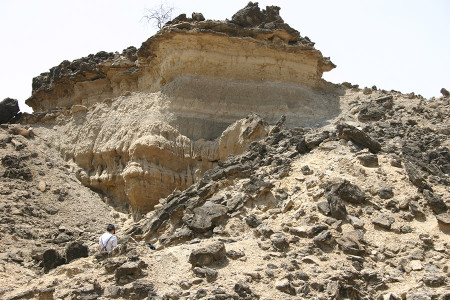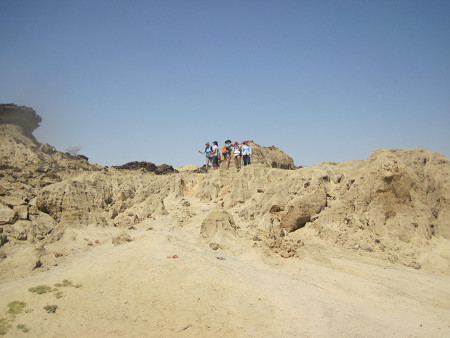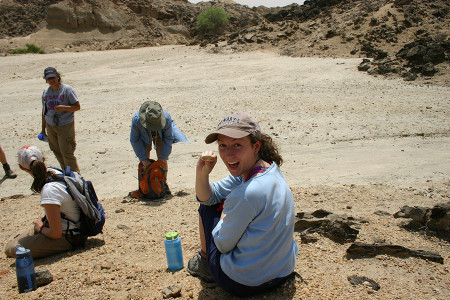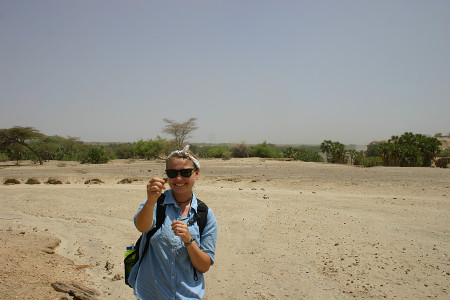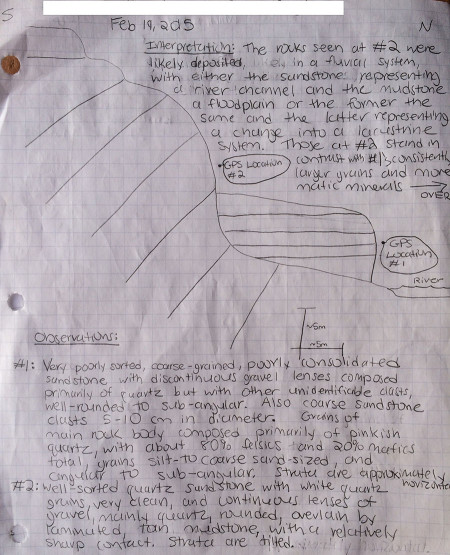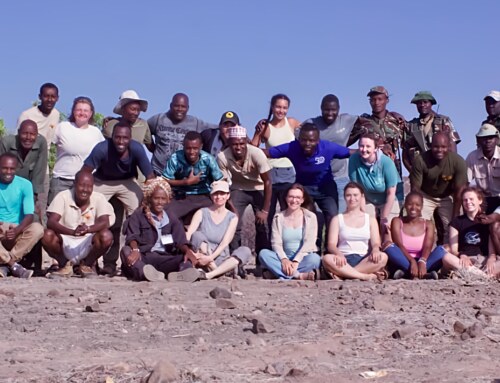Interpreting and reconstructing depositional environments of the past involves an understanding of modern processes acting on the Earth surface that can form a particular rock and/or sequence of rock layers. In the Turkana Basin, the bulk of the last 4 million years are made up of ancient river deposits. One river in particular, the Omo, has had a major influence in the Turkana Basin for this span of time. In contrast, the modern Turkwel River next to the TBI campus supplies <10% of the water and sediment into the present Lake Turkana and is believed to have played a minor role in the geologic history of the basin.
TBI field school students first Geo project involved an examination of the modern Turkwel River and comparing it to two ancient Turkwel River deposits that are ~3.6 million year old and <10,000 year old.
Task 1- Turkwel River and Fluvial Dynamics
- In this study of a modern fluvial system, students measured the flow velocity and depth across the Turkwel River. In addition, they examined the composition and size of sediment across the channel and noted different features such as ripples, laminated sand, and small dunes.
Task 2- Ancient Fluvial Systems in the Turkwel Valley
- ~ 3.5 million year old deposits
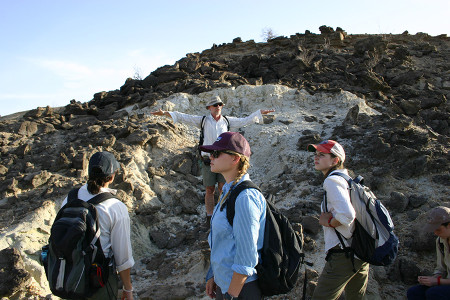
Dr. Feibel stands in front of the Lokochot Tuff dated at about 3.6 million years old. Here he describes what the landscape looked like when volcanic ash blanketed the landscape from the Ethiopian region. This tuff has also been found in sediment cored from the Gulf of Aden.
- <10,000 year old deposits of the Galana Boi Formation near TBI.
- Task 3- Compare and contrast three Turkwel River depositional systems
Students learned that the modern Turkwel River flows unnaturally year-round due to regular water release from a hydroelectric dam hundreds of kilometers upstream. Before the construction of the dam, the Turkwel would seasonally have high discharge and much coarser sediment load with gravel and coarse sand. Although it now contains medium to fine grained sand and mud, the Turkwel River is still like other braided rivers with a network of small channels separated by mid-channel sand bars. Therefore, it appears that fluvial deposits of the past explains what the present could look like.

